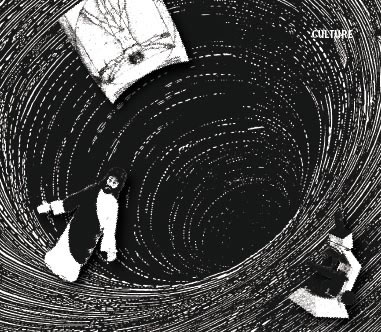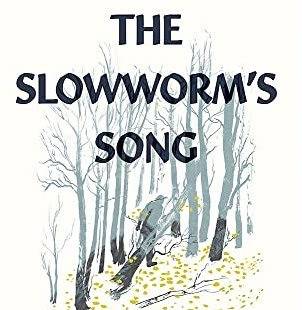In the pre-modern era, there was no distinction between sciences and the arts. They were intertwined enterprises. In his famous 1959 Rede lecture at Cambridge University CP Snow lamented the fact that, as a result of increasing specialisation, they now occupied entirely different spheres.
 This set off a debate that has been raging ever since. But in recent years it’s taken some odd twists. Science, even among the most literary and philosophical of public intellectuals, has taken ascendancy over the arts as the more dominant discipline. And Snow’s two cultures have been replaced by a new dichotomy – between science and religion. Meanwhile the humanities, floundering somewhere in between, are in danger of being lost in the maelstrom.
This set off a debate that has been raging ever since. But in recent years it’s taken some odd twists. Science, even among the most literary and philosophical of public intellectuals, has taken ascendancy over the arts as the more dominant discipline. And Snow’s two cultures have been replaced by a new dichotomy – between science and religion. Meanwhile the humanities, floundering somewhere in between, are in danger of being lost in the maelstrom.
In that first, ground-breaking lecture, Snow condemned scientists for their “self impoverishment” which resulted from their dismissal of the literary and artistic culture, and then denounced members of the literati for being Luddite in their attitude to science. His argument was ostensibly a plea for intellectual unity and educational reform. At times, however, his complaint about the two-cultures-divide became particularly a complaint about the lack of public understanding of science.
He wrote: “A good many times I have been present at gatherings of people who, by the standards of the traditional culture, are thought highly educated and who have with considerable gusto been expressing their incredulity at the illiteracy of scientists. Once or twice I have been provoked and have asked the company how many of them could describe the Second Law of Thermodynamics. The response was cold: it was also negative. Yet I was asking something which is the scientific equivalent of: Have you read a work of Shakespeare’s?”
Although the response to Snow’s lecture was mostly positive, this asymmetry in his argument prompted the literary critic FR Leavis to label Snow a “public relations man” for the scientific establishment, and the row between them continued for a decade.
The argument between Snow and Leavis was just one strand in the extensive debate over the “two cultures” thesis which followed Snow’s lecture. Was the divide being bridged, or was it getting ever wider? Were the arts or the sciences more dominant in wider society? Eventually the debate erupted into open warfare.
In 1975, the biologist EO Wilson published Sociobiology: The Synthesis, which introduced neo-Darwinian theories of human behaviour to a general readership. Inspired by this landmark study, the biologist Richard Dawkins, the linguist Stephen Pinker and the philosopher Daniel Dennett launched a series of incursions into the humanities, in books such as The Selfish Gene (1976), The Language Instinct (1994) and Darwin’s Dangerous Idea (1995). They claimed that our genes and the instincts of our hunter-gatherer ancestors could explain diverse aspects of human behaviour, from our choice of partner to our ability to appreciate classical music.
Upbringing, class, education, culture and taste – all these influences were considered secondary to the biological template we had inherited. “We are survival machines,” wrote Dawkins, “robot vehicles blindly programmed to preserve the selfish molecules known as genes.” And according to Dennett, “A scholar is just a library’s way of making another library.” With the rise of cognitive neuroscience, the hard-wiring of our brains was now offered alongside genes as a predetermining influence on our lives. But the arguments were the same: the privileging of nature over nurture.
The humanities launched a counter-insurgency. Sociologists, psychoanalysts and literary critics argued that it was our environment, rather than our genetic or neurological hardware, that made us who we were. These critics accused the sociobiologists of relying on shaky empiricism and circular “Just So” causality, and they called attention to the atavistic and retrograde character of many of the sociobiologists’ claims; most notoriously the notion that men are predisposed to rape women. They were helped along by Richard Lewontin and Steven Jay Gould, two biologists who opposed the essentialism of evolutionary psychology; Lewontin wrote a series of essays for the New York Review of Books during the ’80s and ’90s which were published in 2000 under the title It Ain’t Necessarily So: The Dream of the Human Genome and Other Illusions.
Other critics accused the evolutionary psychologists of concealing a tendentious political agenda beneath what were presented as objective empirical observations. After all, they argued, science’s claim to unmediated enquiry was compromised by the fact that scientists were, like everyone else, working with the grubby tools of language and culture. “Science studies” developed as an interdisciplinary field that situated scientific research in the context of history and society. At the same time, cultural studies and critical theory advocates began enthusiastically and – in their scientific critics’ eyes indiscriminately – to draw upon the languages of particle physics and cybernetics. Sadie Plant founded the Cybernetic Culture Research Unit at the University of Warwick and Donna Haraway wrote her “Cyborg Manifesto”. Many scientists regarded all this as uninformed and modish appropriation.
This particular phase of the science–humanities debates became known as the Science Wars, which reached a climax in 1996 when Alan Sokal, an American physicist, fabricated an article out of postmodernist pastiche and successfully submitted it for publication in the journal Social Text. For Sokal and his supporters, this stunt represented a resounding victory for real science.
The science–humanities debates were dogged at times by mutual misunderstandings and Punch-and-Judy stereotypes, but at their height they brilliantly illustrated the competing merits of the two conceptual approaches. But science’s aggressive inroads into the humanities took their toll. Lewis Wolpert, Jared Diamond and others claimed not only that science rivalled the humanities, but that it could do away with the humanities altogether. “Art works because it appeals to certain faculties of the mind,” wrote Pinker in his essay “A Biological Understanding of Human Nature”. “Music depends on details of the auditory system, painting and sculpture on the visual system. Poetry and literature depend on language.” The humanities receded from battle, cowed by the reductive power of scientific fundamentalism, embarrassed by the now unfashionable discursiveness of literary and sociological theory, and paralysed by a quandary over the question of where value in humanities research actually resides.
In short, science won; and as a consequence, the science–humanities debates have all but disappeared in recent years. The general public may be woefully ignorant of actual science, but a quasi-scientific mindset has taken hold in the media and public debate. In January, a team of evolutionary psychologists from the University of Missouri published research claiming that Victorian novels, with their emphasis on morality, duty and community, helped to spread altruistic genes throughout 19th-century society. Their findings were reported without scepticism in the British press.
Scientists regularly bemoan the absence of their colleagues on cultural television programmes, but their sense of being left out of the public conversation blinds them to the ubiquitous presence of a new scientism which dictates that every piece of scientific research is uncritically accepted as truth.
It is the public’s craving for truth, amidst crumbling traditions and certainties, that also accounts for the current resurgence of religion. Science, humanities and religion are all rival approaches to explaining the world. But having triumphed over the humanities, and with religion on the rise, science has trained its sights on religion as its new enemy.
This transition is particularly easy to make since many scientists lump the humanities and religion together as wishy-washy in their minds. But science’s war on religion is futile. Science has not only attacked religion; it has forced it, as it did the humanities, to adopt its own terms. As books such as God: The Failed Hypothesis by the physicist Victor Stenger and Dennett’s Breaking the Spell: Religion as a Natural Phenomenon illustrate, science opposes religion on the basis of fact and evidence. The pseudo-scientific Intelligent Design argument is one consequence of this, and the insertion of the word “probably” into the atheist bus advertisements is another. But neither side is able either to prove its own case or to disprove the other’s, and certainly not in a manner that their opponent would be prepared to concede.
As the large number of religious scientists and science teachers illustrates, the opposition is a false dichotomy. Science and religion are simply different languages, discourses, genres: a case of apples and pears. Religion is about belief, and science is about testing hypotheses. Science doesn’t have the conceptual language to deconstruct religion, just as religion doesn’t have the methodological tools to criticise science. The inability of either side to win the argument is the reason why it rages tediously on.
The most effective opponent of religion is not science but the humanities. The humanities can help us move beyond the current redundant debate, because they understand concepts of language, discourse and genre, and are able to compare the two opposing enterprises philosophically. They have the analytical wherewithal to account for the growth of biblical literalism and scientific fundamentalism. The humanities are powerful allies of secularism, with their ability to critique the rise of religion historically, politically and culturally.
The fact that research in the sociology of religion has revealed significant variations in religious belief according to gender, race and socio-economic status shows that understanding why particular groups of people are more inclined towards religion than others is a far more potent way of deconstructing adherence to faith than simply telling everyone that God doesn’t exist. We need to recall why we valued the humanities in the first place and to renew our commitment to their incisive, sophisticated and subtle approach.
The old-fashioned literary critics of CP Snow’s time had a tendency to believe that the point of the humanities was to mine the arts – in particular canonical literature – for material with which to make sonorous and ultimately banal pronouncements on “the human condition”. But the humanities have undergone a revolution since the 1950s. Literary criticism, critical theory, sociology and cultural studies have evolved into rigorous and systematic tools of enquiry.
The humanities have since Classical times denoted a broad field of study including language, literature and history. That field is now extraordinarily rich. History employs a range of historiographical approaches to distinguishing the ways in which we are and are not products of the past. Sociology and cultural studies not only describe but also account for the ways we organise and perceive the world. Literary criticism teaches us how to read advertisments and political speeches alongside fiction and poetry.
Psychoanalysis reminds us that despite the attractively straightforward insights of Darwinism, we are still in the grip of self-delusion. Some of the more technical branches of critical theory may merit a measure of Sokal’s satire. But it is lamentable that scientists routinely take no account of these developments, entitling themselves to a vision of the humanities that is stuck in the 1950s, and believing that joining a book group or attending the theatre is essentially all that’s involved: that “doing the humanities” is, in other words, a matter of pleasure and appreciation.
With scientists failing to halt the rise of blind faith and unreason we need to employ the critical and analytical approaches which the humanities provide, because where religion is concerned, the empirical method is not yielding results.
This piece is from the March/April 2009 issue of New Humanist. subscribe

